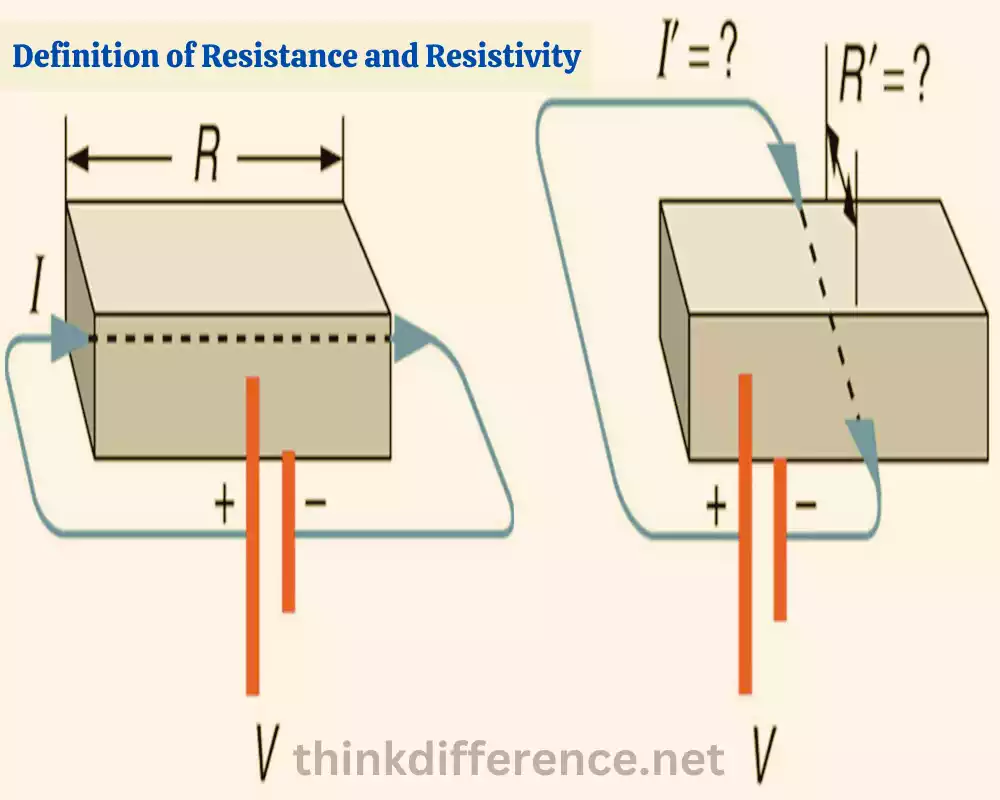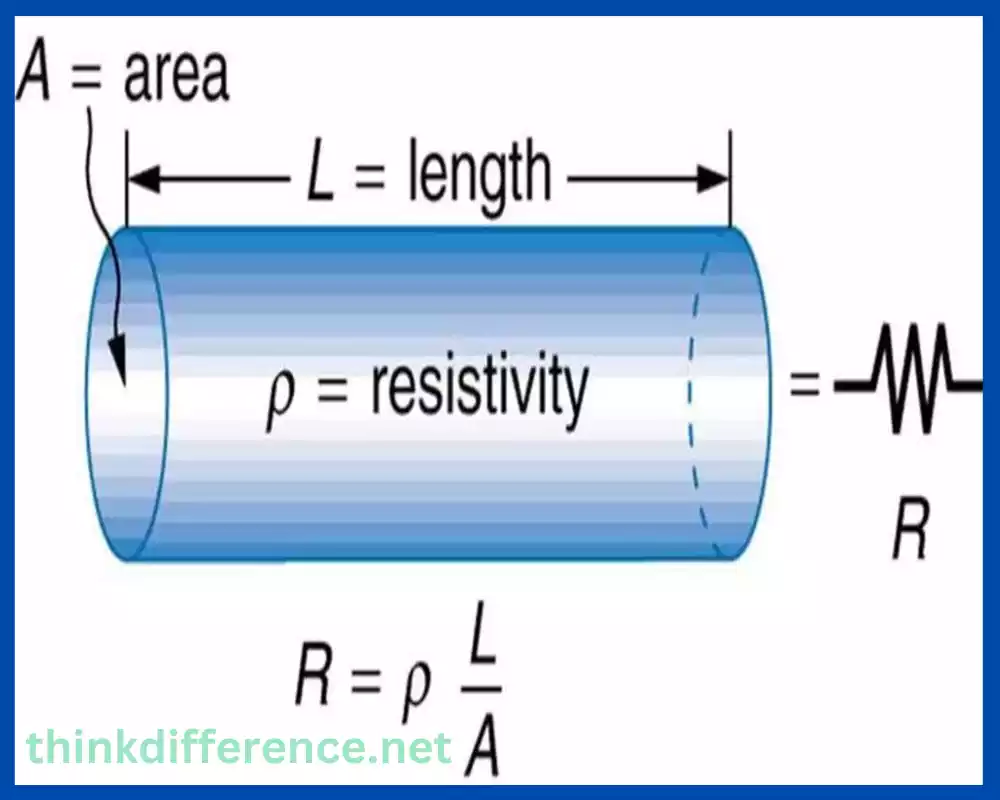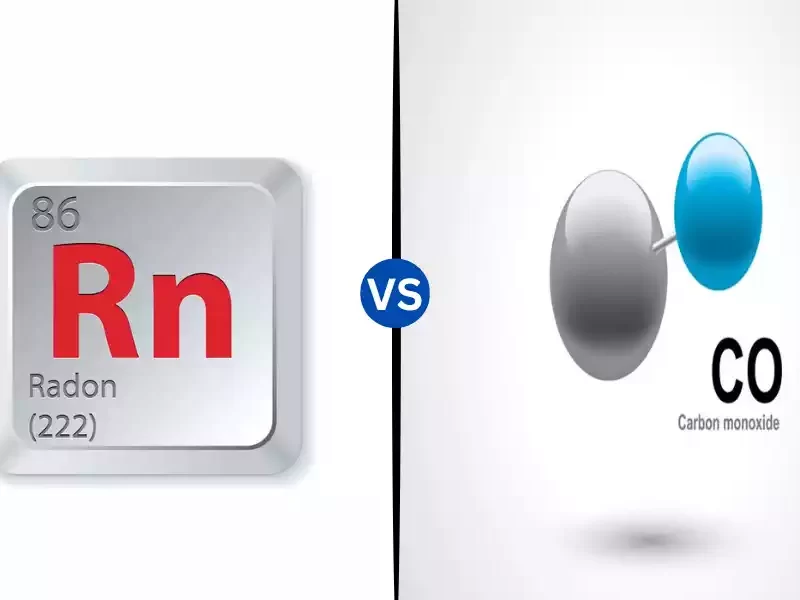Definition of Resistance and Resistivity
Resistance: Physics and electrical engineering define resistance as any obstruction or opposition a component or material presents to electric current flowing through it, measured as its resistance against being charged up with electrons by the voltage applied. Resistance can often be denoted with “R”, with measurements in Ohms being common units for measuring it.
As electrons interact with individual atoms and molecules of material, resistance occurs, making currents harder to move through it. One could consider resistance a roadblock that prevents electrons from traveling freely through it.
Resistance of conductors depends on several variables. These include length, cross-sectional surface area, and temperature – usually longer conductors with narrower cross-sections are more resistant. Some materials also tend to have inherently more or less resistance due to their composition and atomic structures.
Resistance (R), current (I), voltage (V), and resistance can be described by using this equation: V = I * R. This shows how the voltage across conducting conductors is directly proportional to the current flowing through it, with resistance acting as its constant for proportionality.
Resistance of electrical and electronic devices is of vital importance when designing functional, energy-efficient electrical systems. Understanding and managing resistance will enable designers to design systems with optimal current flows and heat production.

Resistivity: Resistivity (also referred to as electrical resistivity or specific resistance electrical) of materials measures their resistance to electric current flow and how strongly electrons move when exposed to an electric field. Resistivity values can be represented with “rho” symbols on resistivity meters measuring how far against this flow they resist electron movement when subjected to an external magnetic field. Resistivity values for materials can be expressed using Ohmmeter measurements (Om).
Resistivity is an intrinsic property of materials. Unlike resistance, which depends on dimensions and the shape of conductors, resistivity measures an intrinsic resistance per length or cross-sectional surface area for each material analyzed – providing insight into its electrical behavior.
Temperature and density of charge carriers such as electrons or ions both play an essential part in determining the resistivity of materials, with materials with higher resistivities being better at blocking electron flow while materials with lower resistivities being better at conducting electricity.
Ohm’s Law calculations require using the resistivity of material as its variable factor. This parameter plays an integral part in designing and analyzing electrical systems and can determine both efficiency and performance.
The resistivity of materials can also help identify them for specific applications materials with higher resistivities tend to make good electrical insulation, while metals and materials with a low resistivity offer effective electricity conductivity.
The resistivity of materials measures their resistance to electrical current flow. By understanding its properties and performance characteristics, resistivity provides insight into electrical performance and behavior and facilitates the design of electrical components and systems.
Importance of understanding the difference between Resistance and Resistivity
Understanding the difference between resistivity and resistance for various reasons is of vital importance:
- Clear Conceptual Understanding: Resistance and resistivity are distinct concepts that describe different aspects of electrical behavior. By understanding their differences, one can develop a clearer and more accurate understanding of how electricity flows through materials and circuits.
- Design and Analysis of Electrical Systems: Knowledge of resistance and resistivity is essential for designing and analyzing electrical systems. Resistance determines the current flow and power dissipation in a specific component or circuit, while resistivity helps in selecting appropriate materials for specific applications based on their electrical behavior.
- Material Selection: Resistivity plays a crucial role in material selection for different electrical and electronic applications. Electrical insulation materials with higher resistance levels are ideal, while those with lower resistance levels provide efficient electricity conductivity. Understanding resistivity aids in choosing materials that meet the desired electrical requirements.
- Efficiency and Performance: Resistance affects the efficiency and performance of electrical systems. By understanding resistance, engineers can design circuits with optimal resistance values to minimize power losses and maximize energy efficiency. Knowledge of resistivity assists in selecting materials with the desired conductivity characteristics to achieve the desired system performance.
- Troubleshooting and Maintenance: Differentiating between resistance and resistivity is useful when troubleshooting electrical systems. Understanding how resistance values can change due to factors like temperature or material composition allows for identifying and resolving issues that affect the proper functioning of circuits or components.
- Advancing Technological Innovations: As technology advances, new materials with specific electrical properties are developed. Understanding the distinction between resistance and resistivity helps engineers and researchers in exploring and utilizing novel materials for innovative applications, leading to advancements in various fields, including electronics, telecommunications, and renewable energy.
Recognizing and comprehending the difference between resistivity and resistance are fundamental for understanding electrical behavior, system design, material selection, and troubleshooting as well as technological progress. They form the cornerstone for managing electricity effectively across an array of applications.
What is Resistance?
Physics and electrical engineering use the term resistance to refer to how well materials or components resist electric current flow. Specifically, it measures their ability to resist electron charges when voltage is applied, typically denoted with “R”, measured using Ohms or microhenry units (MOhm).

Resistance refers to any friction or obstruction electrons encounter when interacting with atoms and molecules in the material, making current flow harder, more resistance equals less current flowing the resistance of material serves as a roadblock that blocks electrons from passing freely through it.
Resistance of conductors depends on several variables, including length, cross-sectional surface area, and temperature. Longer conductors with narrower cross-sections usually exhibit greater resistance. Certain materials contain properties that inherently make them more or less resistant due to their composition or atomic structure.
Resistance (R), current (I), voltage (V), and resistance can be summarized using this equation V = I * R. This implies that voltage across an electrical conductor is directly proportional to current flow through it – with resistance acting as its constant proportionality variable.
Resistance of electrical and electronic devices is integral in controlling current flow and heat production, thus playing an integral part in creating functional yet cost-efficient electrical systems. Understanding and effectively managing resistance are crucial aspects of designing effective and functional electric systems.
Resistors are used in everyday applications to maintain an ideal resistance level within an electronic circuit and limit current flow or divide the voltage by controlling its rate. Resistor use also helps limit current flow by controlling its flow rate or controlling voltage dividers or current controllers in electronic systems.
Factors Affecting Resistance
Resistance can be affected by various factors that impact electric current flow through conductors and its characteristics vary accordingly. Resistance also plays an integral role.
- Length of the Conductor: Resistance increases directly proportionate with conductor length. As the length increases, the resistance also increases. This is because a longer path provides more opportunities for collisions between electrons and the atoms of the material, hindering the flow of current.
- Cross-Sectional Area of the Conductor: Resistance is directly proportional to its cross-sectional surface area. A larger cross-sectional area allows for more space for current to flow, resulting in lower resistance. A smaller cross-sectional area restricts the flow of current and increases resistance.
- Material of the Conductor: Different materials have different inherent resistances. Conductors with a higher number of free electrons, such as metals like copper and silver, have lower resistance. In contrast, materials with fewer free electrons, such as insulators like rubber and plastic, have higher resistance.
- Temperature: Temperature affects the resistance of a material. As temperature increases, the resistance of most conductors also increases. This is due to the increased vibrations of atoms or ions, which impede the flow of electrons and raise resistance. There are some materials, like thermistors, whose resistance decreases with increasing temperature.
- Electrical Conductivity: Electrical conductivity measures how easily an electric current flows through materials. Higher electrical conductivity corresponds to lower resistance and vice versa. Insulators with low conductivity also tend to possess greater resistance.
- Presence of Impurities or Alloying: The presence of impurities or alloying elements in a material can alter its resistance. Impurities or alloying can disrupt the regular arrangement of atoms, resulting in increased resistance.
These factors are interdependent any change to any one could significantly alter resistance levels. Acknowledging their effects is vital when performing applications like circuit design or material selection.
What is Resistivity?
Resistivity (also called electrical resistivity or specific resistance) measures how strongly materials resist electric current flow. It measures whether electron movement under the influence of an electric field can be overcome with strong opposition using resistance.

The resistivity of samples is intrinsic and unrelated to their dimensions or shape, it measures resistance in terms of length or area and can be represented using “rho” symbols in measurements using Ohmmeters (Om).
Resistivity in materials depends upon several variables, including their atomic and molecular structures, the density of charge carriers such as electrons or ions, and temperature. Materials with high resistivities tend to impede electron flow more effectively while those with lower resistances conduct electricity more easily.
The resistivity of an electrical system is integral in its design and analysis, used to gauge the performance and efficiency of different devices and components. Resistivity helps calculate Ohm’s Law as well as gauge the resistance of conductors. It’s used when selecting materials – high resistivity materials make excellent electrical insulation while low resistance metals offer better electricity conductivity.
Resistivity measures the material’s resistance to electric current flow and provides insight into its electrical performance and behavior – helping in designing electrical components and systems.
Factors Affecting Resistivity
Resistivity measures how resistant materials are to electric current flow. Many different factors affect this aspect of a substance’s electrical behavior and determine its resistivity rating. Resistivity can therefore vary widely depending on many variables.
- Temperature: The temperature has an immense effect on resistivity. For most materials, resistivity tends to increase with increasing temperature due to more atomic vibrations causing electron collisions which increase resistance and slow current flow. Although exceptions such as semiconductor materials where resistance actually decreases with increasing temperature exist, generally speaking.
- Material Purity and Composition: Both composition and purity play an essential part in defining a material’s resistivity, with resistivity affected by intrinsic factors like its atom arrangement, crystal structure, and number of electrons or carriers within. Impurities or doping can alter the mobility of charge carriers within materials which impacts resistivity negatively.
- Crystal Structure and Symmetry: A material’s crystal structure and lattice symmetry have an enormous influence on its resistance. Materials with regular crystal structures like metals have lower resistivities than materials with irregular or amorphous structures.
Presence of Dislocations and Defects: Defects such as interstitials or vacancies that exist within crystal structure can significantly impact resistivity; such defects disrupt electron flow, leading to greater resistance than otherwise expected. - Electron Scattering: Diverse scattering mechanisms can affect resistance. Examples include electron-phonon interactions, impurity levels, and grain boundaries that interfere with electron transmission as well as electron-electron scattering processes that impact how readily electrons pass through materials. Their strength and nature determine their resistance capabilities as electrons travel throughout them.
- Magnetic Fields: Magnet fields can radically change the resistance of certain materials. Magnetoresistance occurs when magnetic flux applied parallel or perpendicular to current flow changes resistance dramatically, leading to magnetoresistance resulting from changes in resistance due to magnetic flux being parallel or perpendicularly applied across the current flow.
Understanding these factors, which influence resistance levels of various materials is paramount when selecting materials, designing devices, or optimizing the performance of electrical or electronic systems.
Comparison between Resistance and Resistivity
Resistance and resistivity both describe different aspects of electrical behavior. Both concepts share similarities while having distinct meanings. Here’s a comparison between resistance and resistivity:
Definition:
- Resistance: Resistance of materials to electric current, measured as electrical charges passing through them at different voltage levels is known as resistance. Resistance measures how effectively materials resist electrical charges that pass through them during voltage application.
- Resistivity: Resistivity measures the resistance of materials to electric current flow. It represents their intrinsic resistance per unit of length and area.
Dependency on Dimensions:
- Resistance: Resistance depends on the dimensions and shape of a conductor. It varies with the length and cross-sectional area of the conductor.
- Resistivity: Resistivity is an intrinsic property of the material itself. It is independent of the dimensions or shape of the conductor.
Units:
- Resistance: Measuring resistance using an Ohmmeter.
- Resistivity: When measuring resistivity it should also be determined using Ohm meters (Om).
Material Property:
- Resistance: Resistance depends on both the material and the dimensions of the conductor. Different materials with the same dimensions can have different resistances.
- Resistivity: Resistivity is an intrinsic property of the material. It represents the inherent resistance of a material and is characteristic of that material.
Calculation:
- Resistance: Resistance can be measured using Ohm’s Law: R = V/I for any given V and I value.
- Resistivity: Resistivity is an indirect way of measuring resistance with dimensions alone. Calculating resistance using dimensions alone requires using this formula: R = (r*L)/A where L is the length and A is the cross-sectional surface area of the conductor.
Applications:
- Resistance: Resistive is used in circuit analysis and design, voltage division, current limiting applications as well as many other electrical applications to measure current flow or power dissipated by components or conductors. Resistance can help provide insight into electrical system efficiency as it measures current flow against power dissipation by components or conductors. It provides valuable feedback when considering circuit designs involving resistance as a measure for current dissipation by various electrical applications.
- Resistivity: The resistivity of materials plays an essential part in selecting them for any given application, such as electrical insulation. Materials with higher resistance such as insulators are effective insulators while metals with a lower resistivity make ideal carriers of electricity transmission.
Resistivity refers to an object’s natural resistance while conductor resistance is determined by dimensions and shape, resistivity does not change with either. Both concepts play an integral part in designing and understanding electrical systems.
Relation between Resistance and Resistivity
Dimensions are used as an indirect way of linking resistance and resistivity using resistivity data in tandem with dimensions one can calculate resistance in any conducting material.
Resistance, resistivity, and length (L) of the conductor can be expressed using the equation:
R = (r*L)/A is commonly known as Ohm’s Law or resistance formula and shows how resistance relates directly with resistivity, length of conductor, and cross-section area of conductors.
Unless other variables remain constant, increasing conductor length will increase resistance while increasing cross-sectional surface decreases it. Materials with higher resistivity tend to have greater resistance per length or area unit of length and area unit of area.
This relationship assumes a uniform conductor that has an even cross-section along its entire length in cases when dimensions or size change substantially it may require more complex calculations to accurately gauge resistance.
The resistivity of material and conductor dimension is fundamental in determining resistance along any given electrical pathway. Understanding this relationship is paramount when designing or analyzing electrical circuits or systems.
Conclusion
Resistance and Resistivity are fundamental concepts that govern the behavior of electrical currents in materials. Understanding these principles is crucial for designing efficient electrical systems and electronic devices. By considering factors such as material properties, temperature, and length, engineers and scientists can optimize the performance of electrical components and ensure safe and reliable operations.



